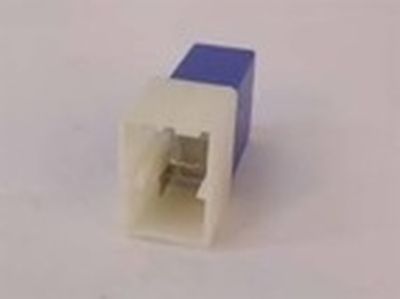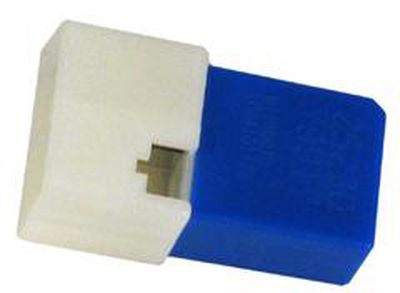×
- Live Chat
- 1-888-726-6993

My Garage
My Account
Cart
Genuine Nissan Juke Relay
Wire Relay- Select Vehicle by Model
- Select Vehicle by VIN
Select Vehicle by Model
orMake
Model
Year
Select Vehicle by VIN
For the most accurate results, select vehicle by your VIN (Vehicle Identification Number).
27 Relays found
Nissan Juke Trailer Tow Harness Relay - Required for Trailer Tow Harness 999T8-XZ000
Part Number: 25230-79917$7.57 MSRP: $11.38You Save: $3.81 (34%)Ships in 1-3 Business DaysNissan Juke Relay
Part Number: 25230-79942$37.56 MSRP: $56.44You Save: $18.88 (34%)Ships in 1-2 Business DaysNissan Juke Relay
Part Number: 25230-7996A$28.92 MSRP: $43.45You Save: $14.53 (34%)Ships in 1-2 Business DaysNissan Juke Relay-Horn
Part Number: 25630-79960$17.16 MSRP: $25.78You Save: $8.62 (34%)Ships in 1-2 Business DaysNissan Juke Relay
Part Number: 25230-79918$30.53 MSRP: $45.87You Save: $15.34 (34%)Ships in 1-2 Business DaysNissan Juke Relay
Part Number: 25230-9F915$25.53 MSRP: $38.36You Save: $12.83 (34%)Ships in 1-2 Business DaysNissan Juke Hitch Relay
Part Number: 25230-79944$7.57 MSRP: $11.38You Save: $3.81 (34%)Ships in 1-2 Business DaysNissan Juke Relay
Part Number: 25230-7991D$13.67 MSRP: $20.55You Save: $6.88 (34%)Ships in 1-3 Business DaysNissan Juke Harness Assy-Engine Room
Part Number: 24012-1KM0C$2061.67 MSRP: $3040.19You Save: $978.52 (33%)Ships in 1-3 Business DaysNissan Juke Harness Assy-Engine Room
Part Number: 24012-1KM0D$1984.27 MSRP: $3006.47You Save: $1022.20 (34%)Ships in 1-3 Business DaysNissan Juke Harness-Engine Room
Part Number: 24012-4DP2A$1569.75 MSRP: $3099.60You Save: $1529.85 (50%)Ships in 1-2 Business DaysNissan Juke Harness-Engine Room
Part Number: 24012-4DP7B$1710.51 MSRP: $3377.51You Save: $1667.00 (50%)Ships in 1-2 Business DaysNissan Juke Harness-Engine Room
Part Number: 24012-4DP6C$1757.39 MSRP: $3470.15You Save: $1712.76 (50%)Ships in 1-2 Business DaysNissan Juke Harness-Engine Room
Part Number: 24012-4DP7D$1757.39 MSRP: $3470.15You Save: $1712.76 (50%)Ships in 1-2 Business DaysNissan Juke Harness-Engine Room
Part Number: 24012-3YW3B$2420.95 MSRP: $3730.27You Save: $1309.32 (36%)Ships in 1-2 Business DaysNissan Juke Harness Assy-Engine Room
Part Number: 24012-1KM0A$1713.82 MSRP: $2596.69You Save: $882.87 (34%)Ships in 1-3 Business DaysNissan Juke Harness-Engine Room
Part Number: 24012-4DP2B$1991.16 MSRP: $3016.91You Save: $1025.75 (34%)Ships in 1-3 Business DaysNissan Juke Harness-Engine Room
Part Number: 24012-4DP2E$1991.16 MSRP: $3016.91You Save: $1025.75 (34%)Ships in 1-3 Business DaysNissan Juke Harness Assy-Engine Room
Part Number: 24012-1KM0B$2130.19 MSRP: $3227.56You Save: $1097.37 (34%)Ships in 1-3 Business DaysNissan Juke Harness-Engine Room
Part Number: 24012-4DP2C$2196.20 MSRP: $3327.58You Save: $1131.38 (34%)Ships in 1-3 Business Days
| Page 1 of 2 |Next >
1-20 of 27 Results
Nissan Juke Relay
If you need any OEM Nissan Juke Relay, feel free to choose them out of our huge selection of genuine Nissan Juke Relay. All our parts are offered at unbeatable prices and are supported by the manufacturer's warranty. In addition, we offer quick shipping to have your parts delivered to your door step in a matter of days.
Nissan Juke Relay Parts Questions & Experts Answers
- Q: What are fuses and relays, and how do they function on Nissan Juke's electrical system?A: Fuses are meant to interrupt a circuit but at a certain amount of the current; the amount of current that is intended to be interrupted by the fuse is used to protect the components and the wiring against further current and since this is normally as a result of a short charge. The main fuses are the 10 milliafarads or greater, and these are housed behind a cover at the left hand end of the facia to reach the main fuses, one must pull open the cover flap. Starter and driving motor fuses and circuit-breakers are located in a supplementary fuse-box in the engine compartment on the battery side, on some models there are further fuses for the heating and light switches to the left of the drive motor and further fuses in the roof of the main fuse-box above the glove-box. A faraway sign is if the fuse wire looks melted or consolidated and it should be noted that before removing the fuse, one should first disconnect the relevant circuit. A plastic implement is clipped into the primary fuse panel and by drawing it, one can replace the fuse; other spare fuses are normally stored in the primary fuse panel. Also, before replacing the fuse, the cause should be found and fixed and only the fuse of the correct rating should be put as usage of the higher rated fuse or any temporary remedy of wire or metal foil may lead to more damages or fire. The fuses are of different capacities and are given different colours for efficient distinction and differentiation. Relays are used as remote-controlled switches for heavy electric currents, multiple control signals, and timing such as in wipers. Other relays are also mounted behind the facia and in the fuse boxes and at numerous other positions inside the car. If a given circuit s powered by a relay has a fault, the circuit can be run to given test on the relay; if the relay clicks as it is energised, then the problem lies within the circuit components or wiring while if the relay does not click, then it can be due to lack of supply or a bad relay. Proper substitution should be carried out using a well known relay to check its efficiency, however, different relays may look almost similar, but their functions may differ. To replace a relay, the proper procedure is to first turn off the associated circuit then using a small amount of force, pull the unit out of the socket and then insert it back into the matching opening.






























